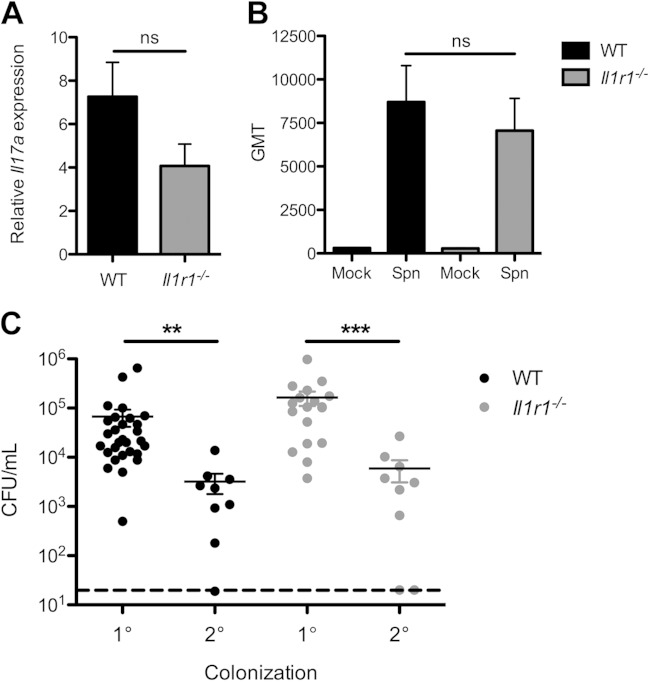FIG 5.
Sensing of IL-1 does not alter adaptive immunity to the pneumococcus. (A and B) Wild-type (WT [black bars]) or IL-1 receptor-deficient (Il1r1−/− [gray bars]) mice were intranasally colonized with S. pneumoniae (Spn) for 14 days. (A) RLT RNA lysis buffer lavage samples from the respiratory tract were obtained, and expression of Il17a was measured by quantitative RT-PCR. Values are reported as fold change relative to PBS (mock)-inoculated mice. Significance was determined by Student's t test. ns, not significant. (B) Total anti-pneumococcal serum IgG levels were measured by ELISA. Values are expressed as geometric mean titer (GMT). Significance was determined by Kruskal-Wallis test with Dunn's posttest. ns, not significant. (C) WT (black circles) or Il1r1−/− (gray circles) mice were inoculated with 107 CFU of S. pneumoniae. For primary (1°) colonization, mice were sacrificed at day 3 postcolonization, PBS nasal lavage samples were obtained, and bacterial density was measured by plating. For secondary (2°) colonization, mice were allowed 8 weeks to clear the pneumococci and then rechallenged with an isogenic S. pneumoniae strain distinguishable by antibiotic resistance. Nasal lavage samples were obtained at day 4 post-secondary colonization, and bacterial density was quantified by plating. The dashed line indicates the limit of detection. Results are from 2 to 5 independent experiments (n ≥ 10 mice). Error bars represent ± SEM. Significance was determined by the Kruskal-Wallis test with Dunn's posttest. **, P < 0.01; ***, P < 0.001.

